A Deeper Dive into the 2019-2020 Season:
An Interview with Randall Kline
August 12, 2019 | by Richard Scheinin
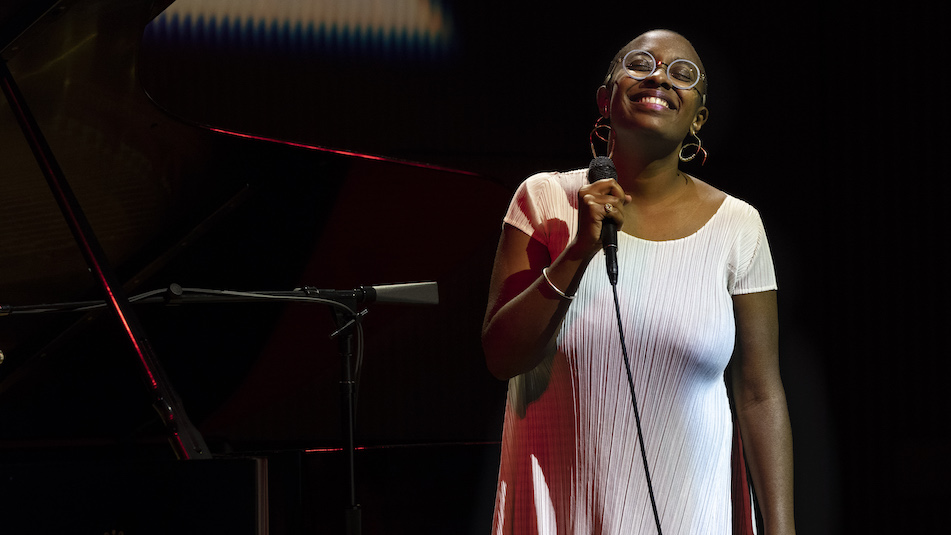
Cécile McLorin Salvant
Where else does this happen? Every year, SFJAZZ presents, literally, hundreds of concerts spanning the full spectrum of jazz and improvised music. There’s bebop and free jazz, ambient jazz and Cuban jazz. There’s funk, fado and flamenco. There are acoustic guitar pickers and string quartets, piano trios and big bands, Bulgarian wedding orchestras and solo saxophonists.
It’s a rare thing, and so we talked to Randall Kline – founder and Executive Artistic Director of SFJAZZ – about the just-announced 2019-20 season. It begins with Ahmad Jamal (four nights in September) and then flows across 38 more weeks: from Bobby McFerrin to Laurie Anderson and Chucho Valdés; from Maria Schneider to Brad Mehldau and Christian Sands; from Wadada Leo Smith to Sérgio Mendes and Cécile McLorin Salvant.
Also, a bit of history will be made. The next class of NEA Jazz Masters will be introduced with a ceremony and concert next April -- the first time in fifteen years the National Endowment for the Arts has held the annual event on the West Coast. The celebration will then continue over three more nights with performances by three past NEA Jazz Masters: Eddie Palmieri, who hails from the Bronx; Abdullah Ibrahim, who’s from Capetown, South Africa; and Benny Golson, a native Philadelphian.
As said, it’s the full spectrum of jazz.
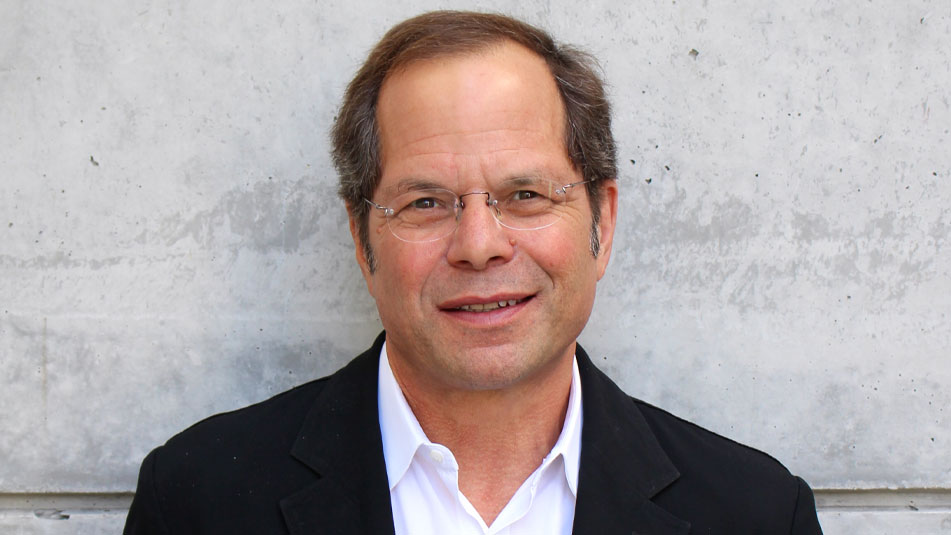
Randall Kline, SFJAZZ Founder and Executive Artistic Director
Q: Randall, this is the eighth season in your “new” hall, the SFJAZZ Center.
A: Oh, my God, eight seasons! Planning them, they move like molasses, and then they’re gone in a flash – and we always say, “Oh man, we did that? How are we going to repeat that next year?” For me, the main story is the community that’s been built around the music here -- and the fact that this community keeps growing. We now do something like 400 concerts each year.
Q: What does it mean to have Ahmad Jamal opening the season?
A: To have an artist of his stature? I’m thrilled. Plus, the fact that he loves the room, that he loves the way it sounds – it’s the highest confirmation that we did the right thing, building our own place. It’s the elders who tend to have the strongest emotional reactions to the hall. You know, people have a romanticized view of the so-called “golden age” in jazz -- this idea that Coltrane and Lee Morgan were playing in these great little places. But typically, even the best clubs weren’t that great – and some of them were pretty seedy! It takes an Ahmad Jamal to appreciate what we’ve done here. He’s the deepest and the greatest; he’s seen it all.
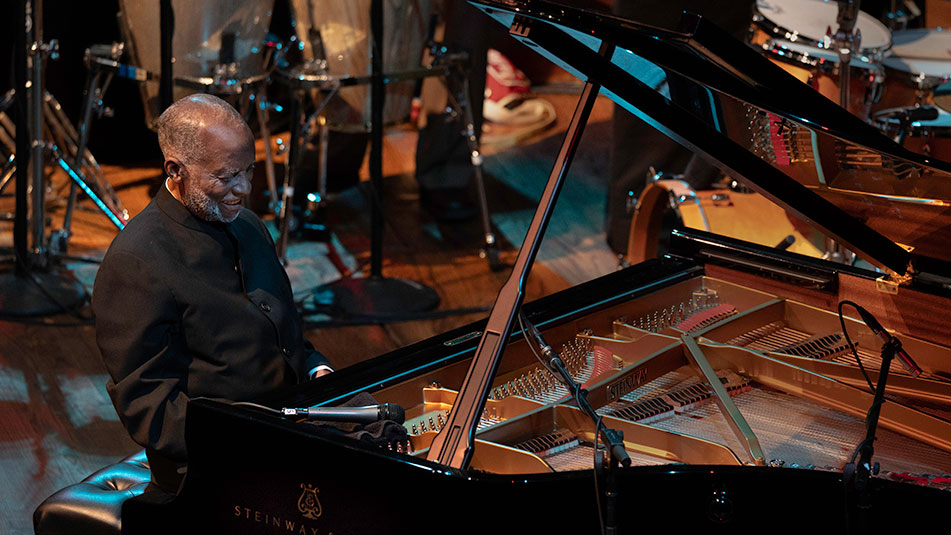
Ahmad Jamal
Q: You’ll host the NEA Jazz Masters induction ceremony next year. That’s a big deal.
A: It’s an honor. Because our whole thing – everything we do here – is built on what these master musicians have done. We’re definitely not a “looking back” organization; we don’t like the idea of jazz as a museum piece, because we believe jazz to be a malleable and growing art form. That said, we know we wouldn’t be here without these people -- without these jazz masters.
Q: Is hosting the ceremony a “coming of age” moment for SFJAZZ?
A: You mean, like, finally we’ve made it? No, that’s not how I feel about it. It’s lovely that they’re doing it on the West Coast and that they think we deserve to be the hosts. But it’s not like we’re coming of age, because we already have come of age. For years now, we’ve been showing that there’s an audience for all the various expressions of this music. And that’s what I find most gratifying -- that we have this audience, and that it recognizes there’s a whole world of discovery here.
Q: I know you admire Cécile McLorin Salvant, who’s performing her new song cycle at the Paramount Theatre in Oakland. You often describe jazz as a “tradition in transition," always moving forward. Does Salvant exemplify that idea?
A: Yes, she does. She’s the real deal. She’s an artist who I first saw at the Monk competition nine or ten years ago. She just got up on that stage and you thought, “Okay, this woman has something that talks to people.” She’s confident and personable and she has this amazing ability to interpret songs.
I’ve seen where people say she’s the rightful heir to Ella; that’s a lot to put on a young artist. But it might not be too far off. This Ogresse project she’s doing for us -- it’s a song cycle, an art piece. But Cécile is without any airs; she’s down to earth. She’s the kind of ambassador who can help break down this wall with people who say jazz is this exclusive club you have to be a part of. I don’t see how anyone could listen to her and not be moved.
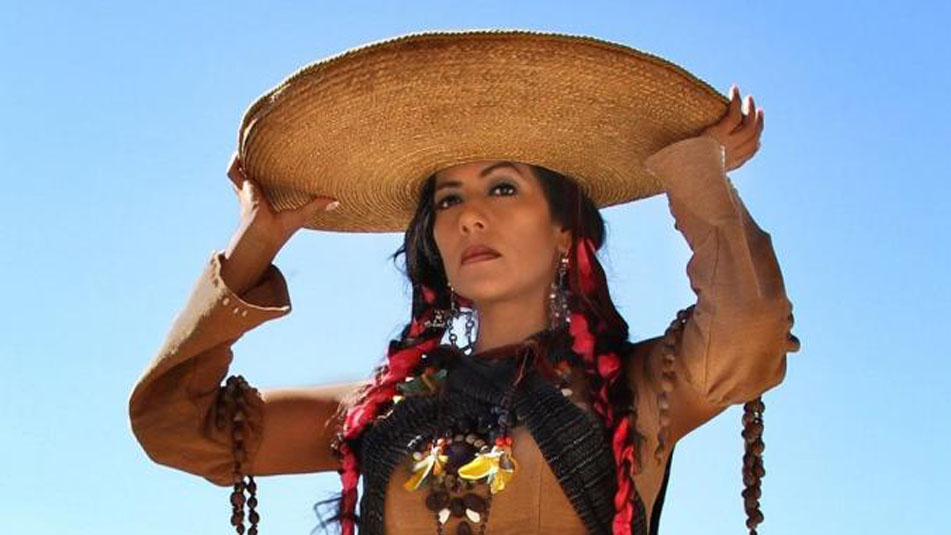
Lila Downs
Q: What about Lila Downs? Her show, also at the Paramount, sounds like a spectacle.
A: She’s an artist’s artist, very much like Cécile: strong, comfortable with herself. She’s intellectually curious, into the idea of exploring her roots. So this is an exploration of the Day of the Dead, tapping into her Mexican heritage. She’s an artist of great integrity. There’s an intellectual basis in this show, but, again, it’s completely free of airs. She and Cecile, they’re both very visceral performers, curious people who explore.
Q: Brad Mehldau is performing a classical program – his own song cycle for piano and voice, plus lieder by Schubert. That’s different.
A: We’re interested in whatever Brad does; he’s an artist who stretches. When we heard he was touring this program with Ian Bostridge, the tenor, we thought, “Fantastic, let’s grab it.”
Q: The SFJAZZ Collective is also doing something different – reinterpreting a pair of iconic albums that came out 50 years ago, in 1969. Plus, the band’s membership is changing pretty radically; it’ll have a guitarist for the first time, and a singer.
A: Exactly. It’s the 50th anniversary of Miles Davis’s In a Silent Way and Sly and the Family Stone’s Stand! And after 15 years of the Collective, we figured, why not change up the formula?
If you view art as being reflective of the times, both those records are good examples. They were exploratory. They reflected the social upheaval of the moment and the message of hope around civil rights strife and ending the Vietnam War and the Summer of Love. Miles was fascinated by Sly, and Sly was very influenced by Miles. Stand! even has a long, jammy kind of jazz tune, “Sex Machine.” Sly’s brother, Freddie Stone, plays guitar on that, and Miles brought (guitarist) John McLaughlin into the band for In a Silent Way. So it makes sense; Adam Rogers is going to join the Collective on guitar, and we’ll have the singer Martin Luther McCoy, who’s from San Francisco.
Q: This brings us to Miguel Zenón, the alto saxophonist who recently left the Collective after 15 seasons. In 2020, he’s returning with his own group to perform an extended piece that SFJAZZ has commissioned from him, Golden City Suite.
A: The first time I heard him play was with David Sanchez’s band. I was in New York. Miguel was in his early 20s, and I thought, “Oh, my God, who’s that alto player up there?” And a year or two later, I was meeting with Josh Redman about the Collective. We were discussing the group’s personnel for its first season. Josh was going to be in it, as was Bobby Hutcherson, and we liked the idea of generational differences -- of mixing a younger generation with the elders. And Miguel proved to be the most dynamic composer, and the more I saw and heard him, I just became very impressed. I wasn’t alone. Everyone saw it; the MacArthur Foundation gave him a “genius” award. There’s this kind of dead seriousness about what he does. He’s a great artist.
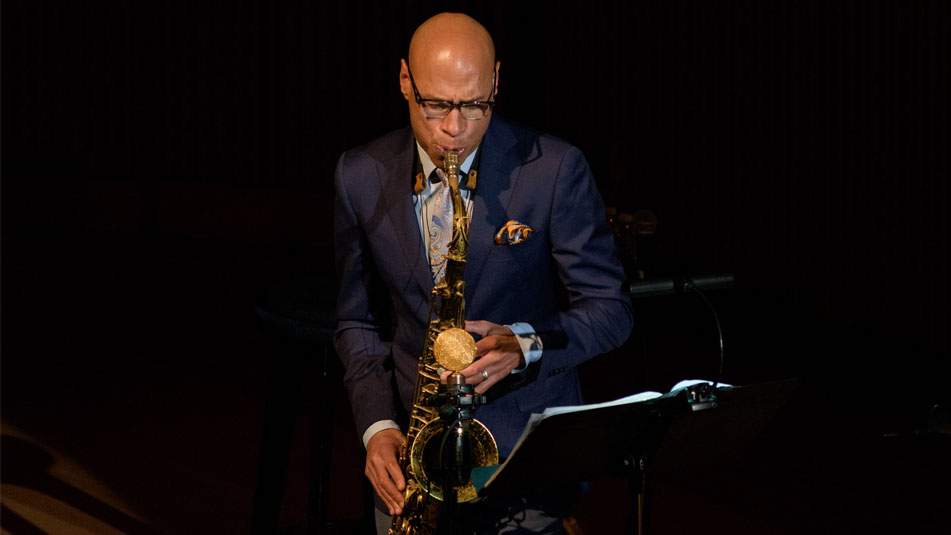
Joshua Redman
Q: Joshua Redman is also coming back next season, with his quartet. What does Josh mean to SFJAZZ?
A: He’s family. We go way back to 1983 when Josh – who would’ve been about 14 -- did a gig with the drummer Guapo Lee at the Asian American Jazz Festival. I was helping out with something, and so that was the first brushing with Josh. And then in 1984, he was in the Berkeley High School jazz band, and they did a show with us. And from that point on, I always stayed in touch. The big moment was when we launched the spring season in 2000, with Josh as guest Artistic Director. And not long after that, we organized the Collective. So there’s been a lot of close work. He’s been around. He understands what we do. We understand what he does. It’s nice to have a native son who’s part of the activity here. We even have a dressing room named after him.
Q: Over the past couple of years, women instrumentalists have begun getting their due -- and more bookings at jazz festivals and venues. It feels like an important corrective is underway. You’ve got the all-star band Artemis coming in for three nights – six top players, all women.
A: Our approach to booking women in jazz is the same as our approach to anything: “Who can play? Who has the audience? Let’s bring ‘em here.” Artemis is a great band. Renee Rosnes, the pianist, was in the Collective for five years; we have a connection. Melissa Aldana (the group’s saxophonist) is someone who made my ears perk up from the first moment I heard her. (Trumpeter) Ingrid Jensen is a good friend. About 20 years ago, we did a trumpet summit with Terence Blanchard, Nicholas Payton and Ingrid. I’m not trying to pat my own back, but we’ve been conscious of this for a long time.
Q: Jason Moran, a former resident artistic director, is coming back for a week. He’ll perform the music he composed for the movie Selma. And he’ll present his homage to James Reese Europe, who brought African-American music to concert halls a century ago, including to Carnegie Hall in 1912.
A: Jason is another one of these extraordinary artists; working with him, I always think, “I’m lucky to have this job.” He’s fully aware of sociological things, historical things, and he understands how important the musicians are. When he was a resident artistic director in our first two seasons in the new building – everybody talks about his skateboarding shows, where we set up the half-pipe and his band jammed with all the skateboarders. But on his other nights, he brought Randy Weston here, and he brought Billy Harper, and he brought Cassandra Wilson. He understood our role; you have to have these musicians in the building. And now Jason is in a position of influence as the artistic director for jazz at the Kennedy Center, and he fully deserves it. He is deep, soulful, sophisticated, and I can’t wait for him to come back here.
Q: I’d like to talk about percussionist John Santos, yet another former Resident Artistic Director. Next season, he’ll curate a week of shows highlighting some of his favorite artists from around the Afro-Caribbean diaspora. His group will perform, too.
A: John is a cultural icon, revered in the community. Here’s a guy who grew up in the Bay Area, and he has such knowledge and passion and intellect – and vibe. He has been one of the more influential people in terms of creating a programming aesthetic at SFJAZZ; coming into this job, I didn’t know a whole lot about the music of the Caribbean Basin. So John is the guy who sort of just opened my eyes up to things, proposing ideas from the very beginning – and thank God we did them. We did this huge concert in 1989 with Cachao, the bassist who basically created the mambo. At the time, I barely knew who Cachao was! But then we put on the concert, and all these great musicians were part of it, including Carlos Santana, and including John. I’ve just learned so much from John over the years, and trusted him. It’s been eye opening for me to hear and see all these connections – to understand that Latin music isn’t just an influence on jazz. No, it’s an essential part of it; these are all parts of the same tree. In John, I had a guru who could help guide the organization.
Q: Let’s move on to one of next season’s Resident Artistic Directors, Marcus Shelby, the bassist and composer. He’s put together four nights with Ledisi, singing with his big band. They’ll perform Marcus’s arrangements of tunes associated with Sarah Vaughan, Ella Fitzgerald, Dinah Washington and Nina Simone.
A: This was one of about eight ideas Marcus had for next season, and I’m ecstatic that it’s happening. Ledisi’s a superstar. I just saw her on Instagram, saying it was her birthday; there were like 200,000 well-wishers. But again, there’s so much history here. Years ago, Ledisi used to play free concerts in Union Square when we were programming the shows there. She wasn’t well known yet, but she was an outsized talent, living right here in the East Bay. So for her to come back and do this week with Marcus – this is absolutely to me a beautiful, full-circle thing.
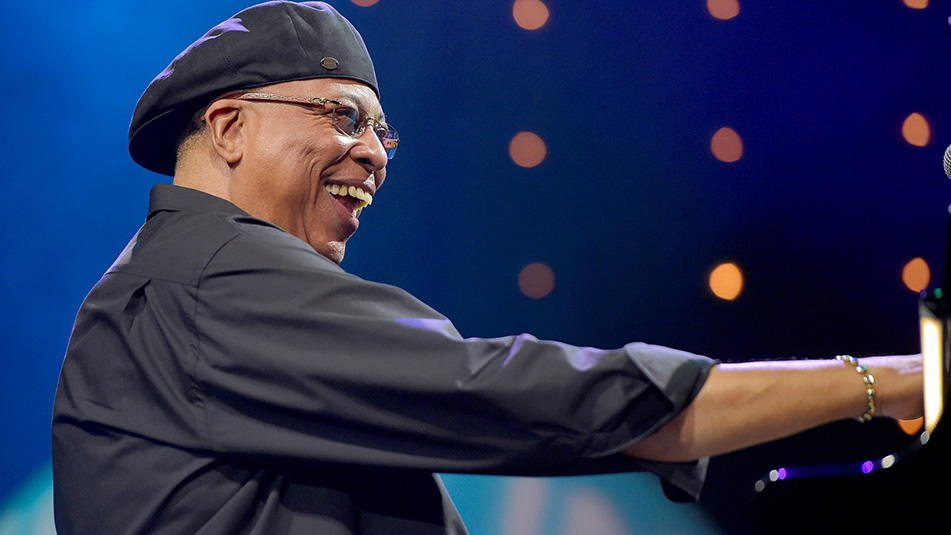
Chucho Valdes
Q: Chucho Valdes, the great Cuban pianist, is someone else you’ve described as “family.” Next season – his second as a resident artistic director – Chucho will lead his Jazz Bata 2 combo, a super-percussive group that builds on some of his experiments going back nearly 50 years. He’ll feature a different guest on each of his four nights.
A: Have you heard the guy who plays the bata with Chucho? His name is Dreiser Durruthy Bombale – he’s incredible! It should be a great week. All four guests have histories here at SFJAZZ. Dianne Reeves sang “My Foolish Heart” with Chucho at the Gala this past January; they just completely melted into each other and now she’s coming back. So is (violinist) Regina Carter, who’s on Chucho’s new album. So is Kenny Garrett, one of the great saxophonists. And so is Joey DeFrancesco, who’s played here with his own groups, but also with Van Morrison and with Bobby Hutcherson. About 20 years ago, we put together this special show with Joey and Jimmy Smith, his mentor. Joey had wanted to do it for years, and so we arranged to put the two of them together at Bimbo’s 365 Club, and the show was recorded and made into an album.
Q: What else are you excited about next season?
A: A lot. We’ve put together an ECM week with Tigran Hamasyan, an amazing pianist, and (trumpeter) Wadada Leo Smith and (guitarist) Egberto Gismonti – there’s a lot of variety within this framing device of “ECM Records,” which is having its 50th anniversary. It’s going to be a helluva week.
But then if you look elsewhere in the season, we’ve got four nights with Scott Amendola and Wil Blades, who’ll be playing with Cyro Baptista and Jeff Parker and Skerik, a wild saxophonist – interesting band! And we’ve got four nights with Carmen Lundy, one of the great jazz singers. And I love the Maceo Parker New Year’s thing, which has become an annual event. It’s a one-of-a-kind show; you get three generations of families showing up. You get grandparents who want to teach their grandchildren about funk: “Let me teach you, little one.”
Q: Let’s finish by returning to Ahmad Jamal and opening week. Ahmad will be 89 years old when he performs for four nights in Miner Auditorium. On those same four nights, Veronica Swift – who’s in her mid-20s -- will sing with her band in the Joe Henderson Lab. That’s a nice contrast.
A: I love it. She’s kind of a total throwback singer, and she’s got the chops, along with this youthful confidence that’s disarming to watch. She’s fearless, but rooted in this post-bop tradition. I saw her sing in the finals of the Thelonious Monk competition a few years ago. For everyone who gets to the finals, it’s like their big moment: They’ve rehearsed their two or three songs; they’ve got their arrangements ready; they know exactly what they want to do. But this was just after the massacre at the concert hall in Paris (in November 2015), and, hearing the news, Veronica switched her plans and said, “My mother taught me this song: 'This Bitter Earth.’” She felt the moment; that’s not exactly a well-known standard, but that’s what she decided to sing at the moment when she could win or lose a competition. It was ballsy and it was mature. She’s got this unbelievable youthful confidence and bravado, but she also has this deep understanding of human sensitivity beyond her years. It’s unusual for someone that young to have that kind of depth in her singing.
So the juxtaposition on opening week of having someone who seems to be headed somewhere and someone who’s been there, is a nice thing.
Q: I guess you see it as symbolic – kind of a passing-the-torch week of programming?
A: It speaks to the fact that we can take chances with our programs and -- at this point, usually – people will come. I run into people in the grocery store who want to talk about our shows. My wife Teresa goes to the eye doctor, and her doctor says, “I just got the summer brochure!”
What’s cool to me is we spent a long time building an audience; we didn’t appear out of nowhere to create this building. It’s happened slowly and the audience has stuck with us. I feel such gratitude for the Bay Area and San Francisco – that the people support us and are willing to take chances with us. I think back to something Dianne Reeves said during one of her shows a couple of years ago: “This isn’t a stage. It’s a playground.” In other words, the musicians can go outside the box; anything can happen. The takeaway for me is that I think we can make it even fresher and even more relevant. We’ve got to be on our toes and listen to our audiences and listen to the musicians in order to do an even better job here.”
